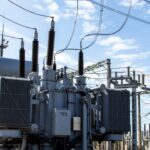In the realm of outdoor advertising and storefront displays, signs play a crucial role in attracting customers and conveying brand messages. However, over time, the lighting components of these signs can become outdated, inefficient, or even non-compliant with modern energy standards. Sign light retrofitting offers a solution that not only enhances visibility and aesthetics but also aligns with sustainability goals. This article explores the concept of sign light retrofitting, its benefits, considerations, and the process involved.
Understanding Sign Light Retrofitting
Sign light retrofitting involves upgrading or replacing the lighting elements of existing signs with newer, more efficient technologies. This process aims to improve illumination, reduce energy consumption, and enhance the overall performance and lifespan of signage systems. The retrofitting can include replacing traditional fluorescent tubes with LED modules, updating wiring for better efficiency, or installing new fixtures that comply with current lighting regulations.
Benefits of Sign Light Retrofitting
- Energy Efficiency: One of the primary advantages of retrofitting is the significant reduction in energy consumption. LED lighting, for example, consumes much less power compared to traditional fluorescent or incandescent bulbs, leading to lower electricity bills and reduced carbon footprint.
- Enhanced Visibility: Modern lighting technologies offer superior brightness and color rendering, making signs more visible and attractive both during the day and at night. This can directly impact foot traffic and customer engagement with businesses.
- Longevity and Maintenance: LED lights have a longer lifespan and require less frequent replacement compared to older technologies. This reduces maintenance costs and minimizes disruptions to business operations.
- Environmental Impact: By reducing energy usage and lowering the demand for new materials, sign light retrofitting contributes to environmental sustainability. It aligns with corporate social responsibility goals and may qualify for energy efficiency incentives or certifications.
Considerations Before Retrofitting
Before embarking on a sign light retrofitting project, businesses should consider several factors:
- Current Sign Condition: Assess the structural integrity of the sign itself to ensure it can support the new lighting components.
- Regulatory Compliance: Check local regulations and zoning laws regarding signage and lighting to ensure compliance with brightness limits and energy efficiency standards.
- Cost and ROI: Evaluate the upfront costs of retrofitting against long-term savings in energy bills and maintenance expenses to determine the return on investment (ROI).
- Professional Expertise: Engage qualified professionals or contractors experienced in sign lighting retrofitting to ensure proper installation and adherence to safety standards.
The Retrofitting Process
The process of retrofitting typically involves the following steps:
- Assessment: Conduct a thorough inspection of the existing signage and lighting infrastructure.
- Design and Planning: Develop a retrofitting plan that includes selecting appropriate LED fixtures, calculating energy savings, and ensuring compliance with regulations.
- Installation: Remove old lighting components and install new LED modules or fixtures according to the retrofitting plan.
- Testing and Adjustment: Verify the functionality of the new lighting system and make any necessary adjustments to ensure optimal performance.
- Maintenance and Monitoring: Establish a maintenance schedule to monitor the performance of the retrofitting and address any issues promptly.
Conclusion
Sign light retrofitting offers a cost-effective and sustainable way to enhance the visibility, efficiency, and attractiveness of outdoor signs. By upgrading to modern LED technologies, businesses can achieve significant energy savings, improve signage performance, and reduce environmental impact. As businesses strive to stay competitive and environmentally responsible, sign light retrofitting emerges as a practical investment that yields long-term benefits. Embracing this approach not only transforms signage aesthetics but also supports broader sustainability goals in today’s commercial landscape.









